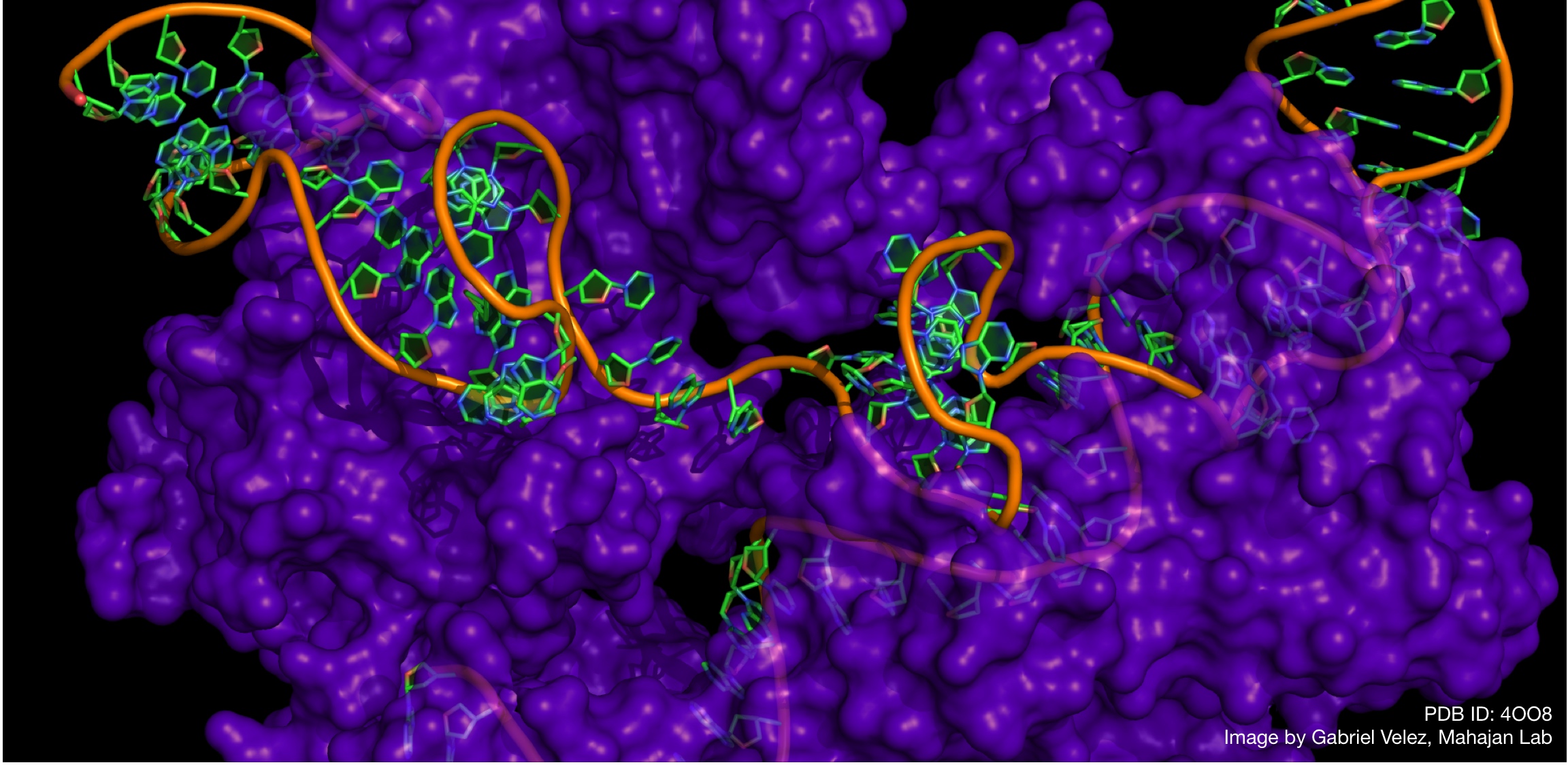CRISPR-Cas9 editing technology—by virtue of its speed and unprecedented precision—has been a boon for scientists trying to understand the role of genes in disease. The technique also has raised hope for more powerful gene therapies that can delete or repair flawed genes, not just add new genes.
Most studies that search for these off-target mutations use computer algorithms to identify areas most likely to be affected and then examine those areas for deletions and insertions. This works when CRISPR is performed in cells or tissues in a dish, but whole genome sequencing has not been employed to look for all off-target effects in living animals. For the new paper, researchers sequenced the entire genome of mice that had undergone CRISPR gene editing in the team’s previous study and looked for all mutations, including those that only altered a single nucleotide.

Structure of the gene editing enzyme Cas9 interacting with guide RNA and DNA (PDB ID: 4OO8). Source: Gabriel Velez (Mahajan Lab)
They found that off-target mutations caused by CRISPR, including single nucleotide mutations and mutations in non-coding regions of the genome, occurred. This will be good fodder for anti-science activists who are looking for a way to raise money criticizing CRISPR the way they have GMOs (but not Mutagenesis, which they have exempted as organic food) even though there was nothing materially different about the animals.





Comments